Yonezawa Tansu (chest of drawers) (YonezawaCity)
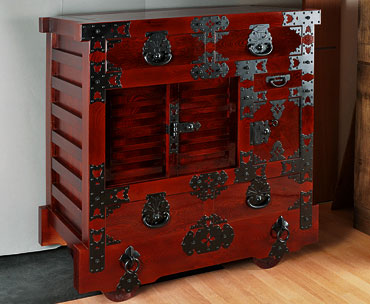
History/Outline
These Isho-tansu (dresser), Kaidan-tansu (stepped chests of drawers) and Yonezawa-karato were born in Yonezawa, a major textile production region.
Chests of drawers were first made around Japan during the late Edo period (18th to 19th century). In the Meiji period their production grew dramatically in many parts of Japan, bringing about locally characteristic chests of
drawers, including Yonezawa Tansu. Many of these are Isho-tansu (dressers), which can be separated into upper and lower parts, probably because Yonezawa produces a large number of textiles. There are other kind of cabinets such as red
lacquered Kaidan-tansu (stepped chests of drawers) which are placed in a triangular space underneath stairs and said to invite happiness, and the unique Yonezawa Karato Tansu which features wheels.
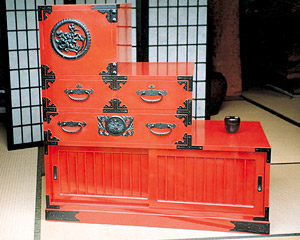
Photos provided by Nagai Furniture Store
Techniques/Characteristics
These are the work of an artisan who sticks to traditional techniques from selecting wooden materials to production and finishing processes.
Presently, only Nagai Kaguten, a furniture shop which was opened in 1912, makes Yonezawa-tansu. Strictly selected raw materials such as zelkova and paulownia trees are used, first being fully dried and then lacquered and
decorated with metal. In addition to Yonezawa Tansu, they produce various other types of furniture such as Wa-chatansu (a cabinet for storing tea-making utensils) made from Kuro-gaki (black persimmon tree, which is a black striped high-grade
material). They employ neither composite nor synthetic woods, but strictly pure woods and hand-made techniques.
Main Products
●Yonezawa Karato ●Kaidan-Tansu (stepped cabinets) ●Isho-tansu(dressers) ●Mizuya-tansu (cupboard for tea utensils) ●Solid wood tables and chairs
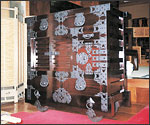
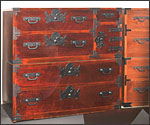
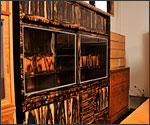
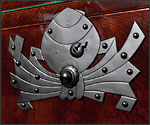
Photos provided by Nagai Furniture Store


